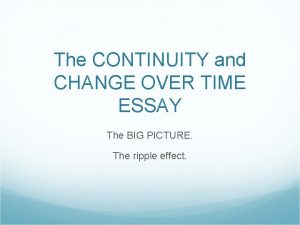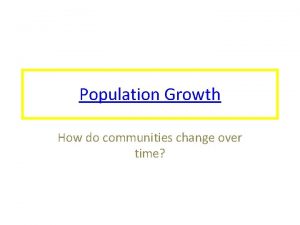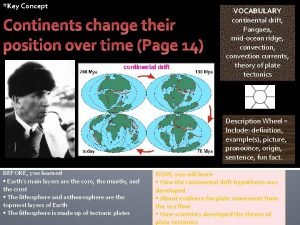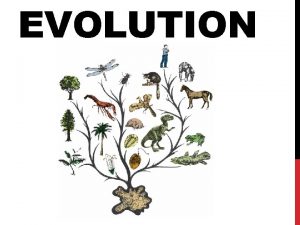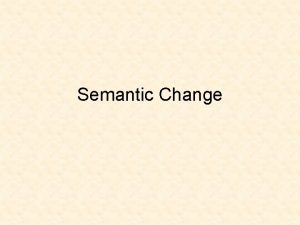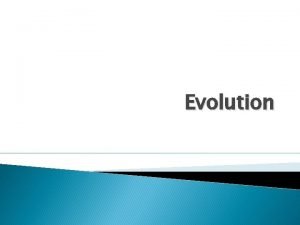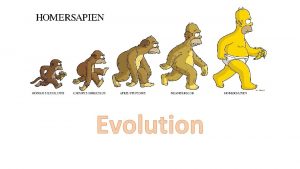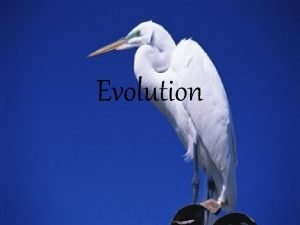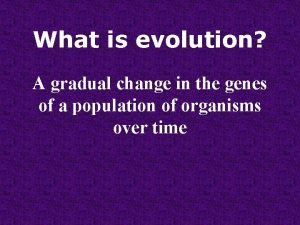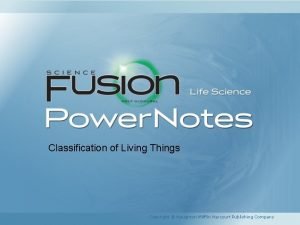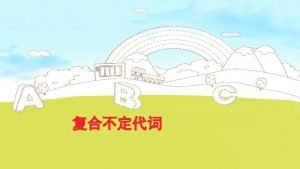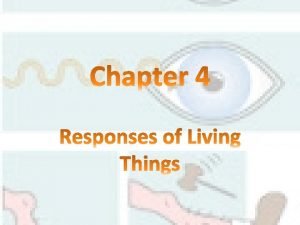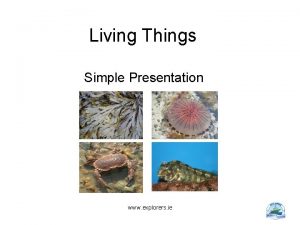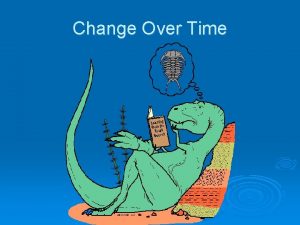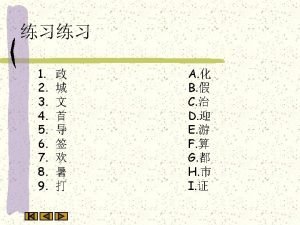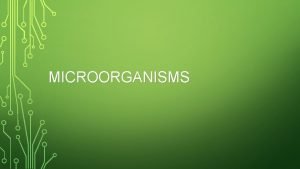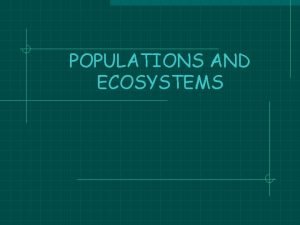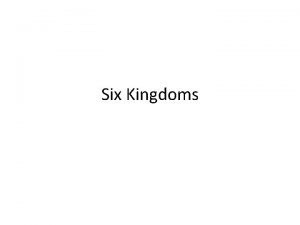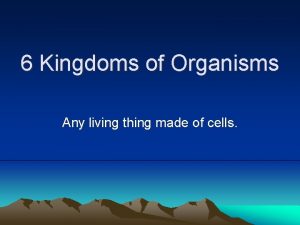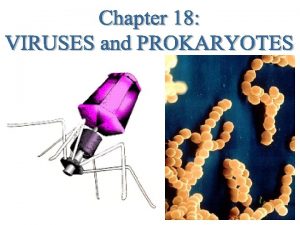Change Over Time Any living thing is called














- Slides: 14

Change Over Time • Any living thing is called an organism. • 5 Characteristics of living things: • Made of cells • Respond to their environment • Reproduce • Use Energy • Grow and Mature • All living things need water, air, food, and a place to live in order to survive. • All living things evolve and adapt to their surroundings in order to survive. • Evolution is the process by which populations change over time. • Adaptation is a trait that increases an organism’s ability to survive. • Natural selection is a process by which individuals that are better adapted to their environment are more likely to survive and reproduce than other members of the same species.

Darwin’s Voyage • Charles Darwin • Arrived in the Galapagos Islands in 1835 • On the Origin of Species (Darwin’s book) • For the 20 years that followed his return to England Darwin studied plants, animals and adaptations • Darwin wrote about how species can change gradually over many, many generations and become better adapted to new environmental conditions. • Observed that the animals on the islands were similar to those on the mainland • Galapagos Animals • The Galapagos animals, while similar, were also different from island to island as well as to the mainland • Most obvious difference were the sizes and shapes of the finches’ (small birds) beaks • Sizes and shapes of the beaks were adapted to what the birds ate

Factors that affect Natural Selection: Overproduction most species produce far more offspring than will/can survive Overproducers Producers mature rapidly mature slowly short-lived: most die before they reproduce live long lives: low juvenile mortality rate have many offspring - tend have few offspring at a to overproduce time invest little in individual youngsters care for their young population not regulated population stabilizes near by density: boom and bust carrying capacity population figures

Factors that affect Natural Selection: Competition: since food and resources are limited, the offspring have to compete to survive Darwin called it: “Struggle for existence”

Factors that affect Natural Selection: Variation: Members within a species exhibit individual differences – these differences must be inheritable Natural selection won’t work in a population of clones! Remember that a key to variation is sexual reproduction.

Factors that affect Natural Selection: Only those individuals that are better suited to the environment will survive and reproduce (“Survival of the fittest”). Fit individuals pass on to a portion of their offspring the advantageous characteristics.

Factors that affect Natural Selection: Changes in the Environment Example, the pepper moth. Originally, the pepper moth was white, which was good because it could blend in. Then, trains were invented and the soot they produced covered the trees. Making the trees black. The moths that were black could now survive better.

Factors that affect Natural Selection: Mutations Some species are more susceptible to mutations. Some mutations allow the animal to survive; other mutations do not allow the animal to survive. The mutations that are not helpful decrease the chance of survival of the species.

Factors that affect Natural Selection: Man: Artificial Selection • Selective breeding, cloning, and genetic engineering are three different methods for developing organisms with desired traits. • Selective breeding is the process of selecting organisms with desired traits to be parents of the next generation. • A clone is an offspring that has exactly the same genes as the organism it was produced from. • Genetic engineering is a process where genes from one organism are transferred into the DNA of another organism. • For example: Dogs

Evidence of Evolution: Fossil Record • Some organisms show related bone structure to ancient organisms shown through fossil record. • How fossils form • An organism dies and becomes buried in sediment • Minerals gradually replace the bones and more sediments cover the fossil Pterodactyl Trilobite

Evidence of Evolution: Similarities in Body Structure If the two organisms have body structures that are similar, they must have had a common ancestor. Homologous structures are similar structures that related species have inherited from a common ancestor.

Evidence of Evolution: Similarities in Early Development • Scientists look at embryos of different organisms and find that many embryos resemble one another.

Evidence of Evolution: Vestigial Structures • Vestigial Structures: A structure found in an organism that is no longer in use but may have been useful at some point in the organism's life. Tail Present in human and all vertebrate embryos. In humans, the tail is reduced; most adults only have three to five tiny tail bones and, occasionally, a trace of a tail-extending muscle. Whales possess a femur and pelvis, but these bones are no longer useful to the mammals.

Evidence of Evolution: Similarities in DNA • The more similar the sequences of DNA are, the more closely related the organisms are. • Humans and chimpanzees DNA is more similar than human DNA is to dog DNA.
 Any living thing is called
Any living thing is called Continuity and change essay
Continuity and change essay Why do communities change over time
Why do communities change over time A change of position over time
A change of position over time The gradual change in a species over time
The gradual change in a species over time Semantic narrowing
Semantic narrowing The change in the hereditary features over time
The change in the hereditary features over time The gradual change in living communities
The gradual change in living communities Variation natural selection definition
Variation natural selection definition Change in hereditary features over time
Change in hereditary features over time The gradual change in a species over time is
The gradual change in a species over time is Why do classification systems change over time?
Why do classification systems change over time? Some any+body/one+thing+where
Some any+body/one+thing+where Discuss the environment that surrounds
Discuss the environment that surrounds Is seaweed a living thing
Is seaweed a living thing

